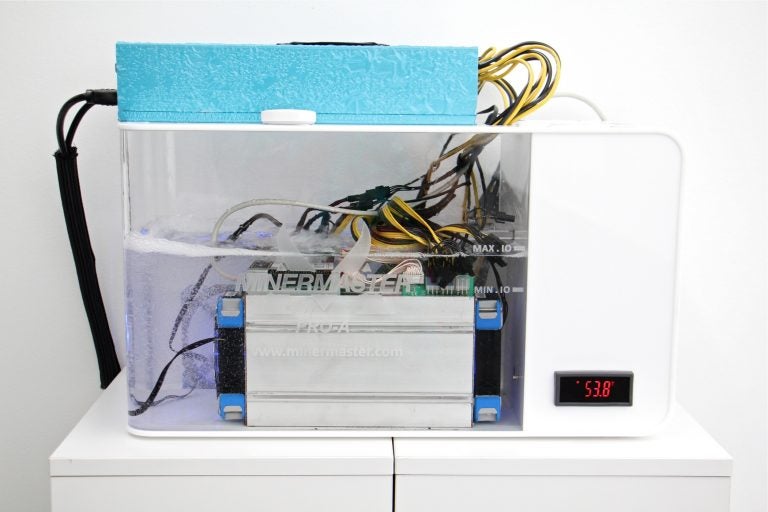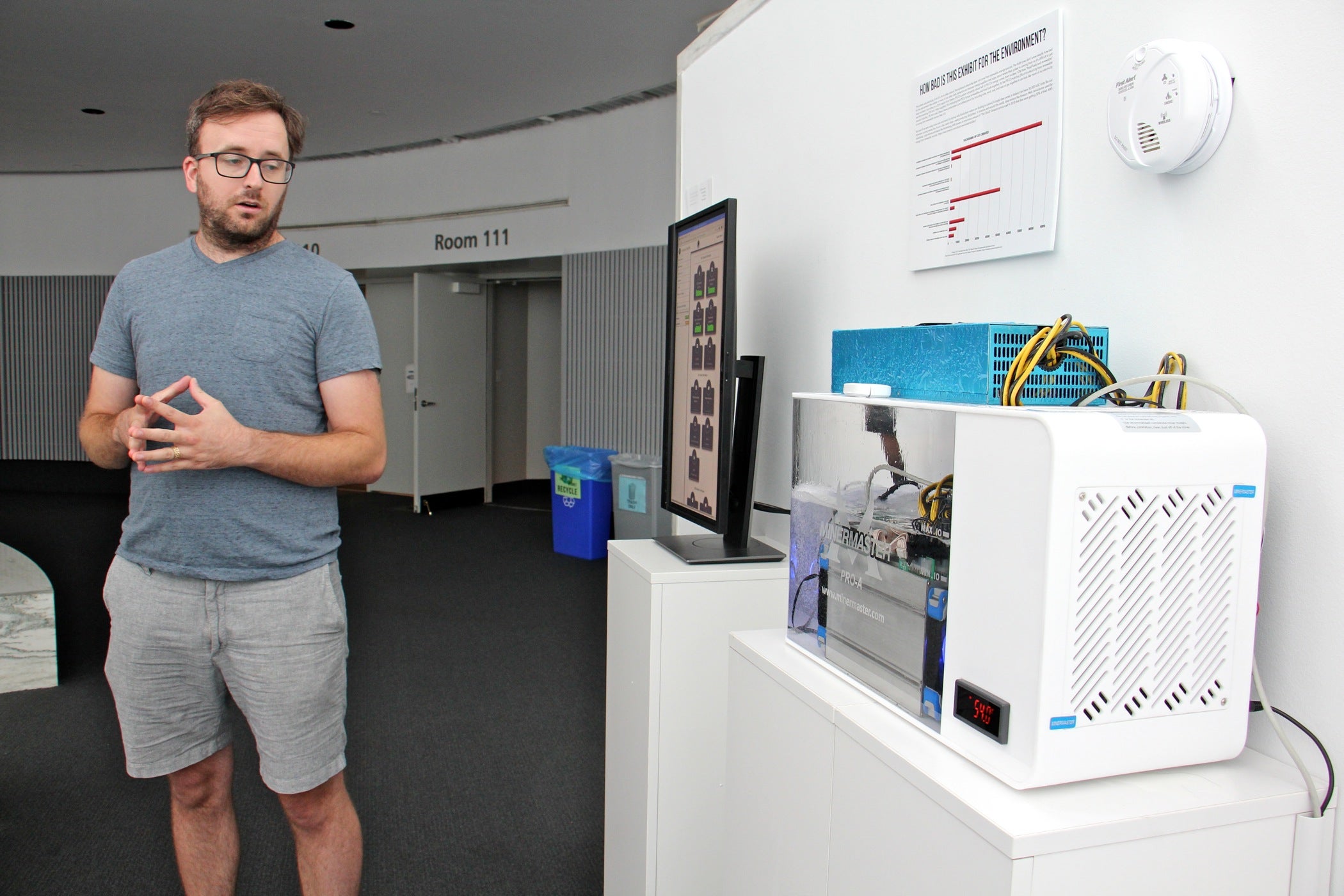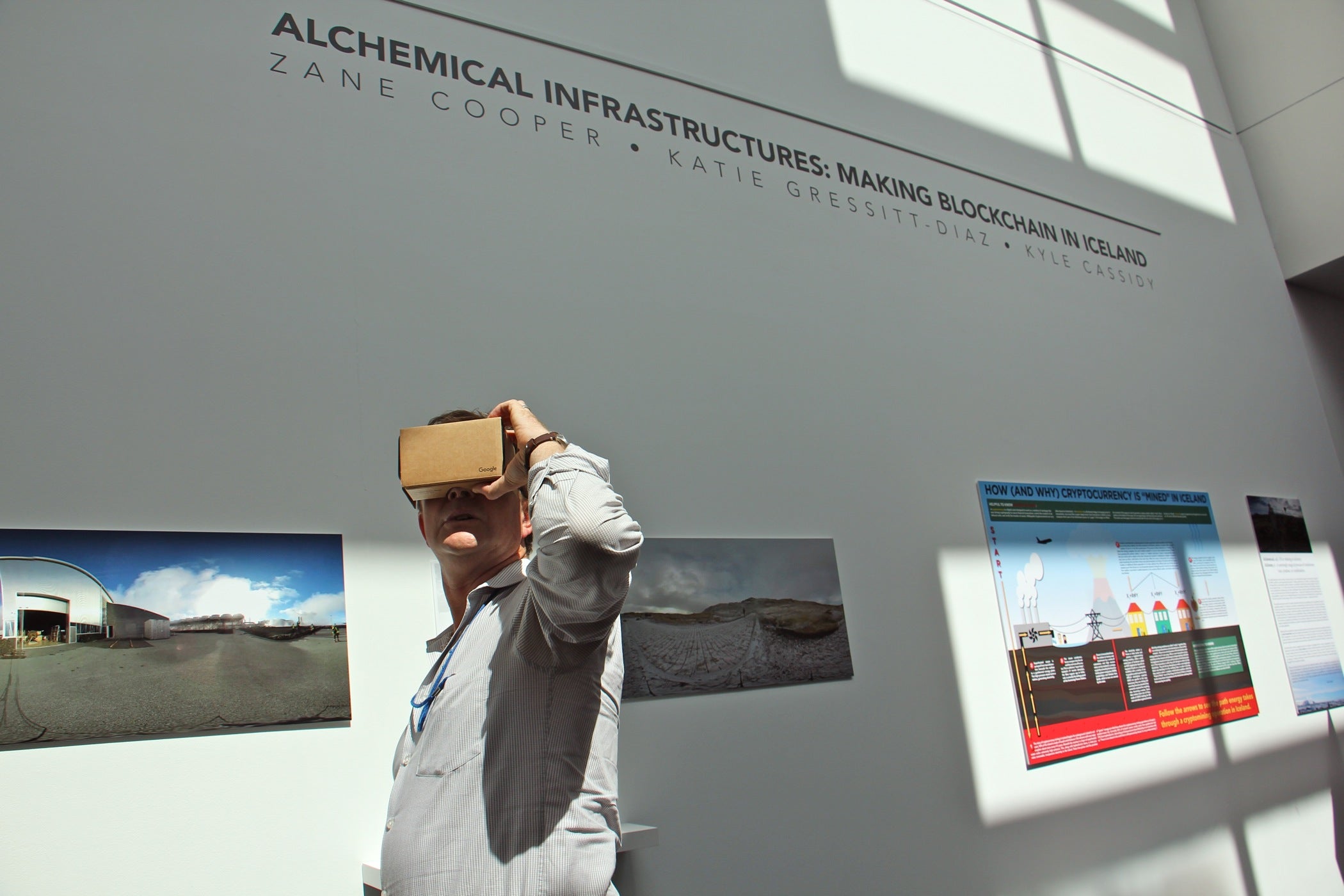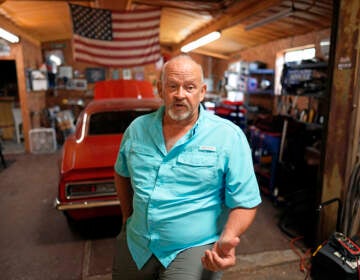Learn how blockchain works at cryptocurrency mining exhibit in University City
An exhibition at the University of Pennsylvania traces the ecological roots of the blockchain industry.

A dedicated computer, cooled and quieted by a bath of mineral oil, creates a cryptocurrencey called Auroracoin. It is part of an art exhibit at the Annenberg School of the University of Pennsylvania, 'Making Blockchain in Iceland.' (Emma Lee/WHYY)
A small machine about the size of a shoebox hums continuously in the lobby of the Annenberg School of Communication at the University of Pennsylvania. It’s an ASIC miner, an applied-specific integrated circuit designed to do one thing and one thing only: generate Bitcoin.
Because ASICs are designed to run 24/7, constantly grinding blockchain calculations, it gets hot. So this ASIC is submerged in a tank of mineral oil kept at a constant 50 degrees.
“It also keeps it quiet,” said Zane Cooper, a doctoral candidate at Annenberg. “If it were out of the oil, not only would it get hot but it runs at about 90 decibels. It sounds like a vacuum cleaner.”

When you consider the energy used, the unit is not cost-effective. A video monitor on the wall gives viewers a real-time reading of the two values: the ASIC eats about $2.50 a day in power (per PECO’s rate) and produces about $.35 in cryptocurrency (per current market rate). That’s not a great return on investment.
Cooper created the multi-media exhibition “Alchemical Infrastructures” not only to explain how blockchain works, but that virtual cryptocurrencies (of which Bitcoin is one of hundreds of varieties) are actually rooted in terra firma.
Specifically, Iceland.
Iceland’s geography is ideal for mining Bitcoin. Cryptocurrency, of course, is not literally mined. It does not physically exist, rather it’s a unit of credit that gets its value from a complex network of cyber transactions. Computers work day and night to validate digital transactions, for which they are rewarded with a fraction of a Bitcoin. All that electronic activity requires energy.
Electricity in Iceland is almost completely generated by renewable sources, mostly hydroelectric and geothermal. It’s also cold. In the rural parts of the island nation, Bitcoin mining operations set up thousands of ASIC machines in low, long buildings that look like poultry farms.
The power needed to run the machines is relatively cheap. The structures are rigged with fans that pull in air from the chilly outdoors, cooling the machines naturally.
In “Alchemical Infrastructures,” Cooper uses a statistic showing blockchain operations consume more power in Iceland than all Icelanders combined.
“Blockchain is billed as a trustless system. You don’t need to trust humans, you just need to trust the system,” he said. “The thing is, on our journey walking through this complex blockchain ecology, humans are involved in every step of the process.”
The exhibition features the work of two other artists, photographer Kyle Cassidy and sound designer Katie Gressitt-Diaz. The three of them made trips to Iceland to understand and document the human beings that underpin the virtual world of cryptocurrency.
“I’m very visual, and it took Zane a long time to explain blockchain to me,” said Cassidy. “I had no clue. When Zane explained it to me it went right over my head.”
Armed with a camera and a pair of sturdy boots, Cassidy went into the geothermal fields of Iceland, where the heat from a field of magma two kilometers below Iceland’s surface is captured to generate electricity.

He then photographed the engineers that maintain the electrical grid, the politicians who argue over industry regulations, the designers of Auroracoin (Iceland’s alternative to Bitoin cryptocurrency), people who set up small ASIC mining operations in their homes, and activists who fight for equitable energy access on the Island
“You’re right now in a country that has an abundance of energy,” said Oktavia Hrund Jonsdottir, a deputy minister of Pirate political party in Iceland and one of the subjects of the exhibition. “Yet at the same time you have entire parts of the country that do not have reliable energy accessible to them.
“Being able to see all these faces and hear all these people’s stories made it not abstract for me,” said Cassidy. “It made it much easier for me to see how this works.”
“Alchemical Infrastructures” involves Cassidy’s portraits, Cooper’s ASIC machine, and a sound travelogue by Gressitt-Diaz, who recorded the ambient sounds of Iceland, both natural and industrial. A pair of headphones is available in the exhibition.
The sound and imagery can also be experienced via VR goggles, also in the exhibition.

“Alchemical Infrastructures” will be on view until May, as part of the University of Pennsylvania’s “Year of Data” campus-wide theme. Every day, Cooper’s ASIC machine will be collecting roughly $.35 of Auroracoin while eating up roughly $2.50 of power. Because the University of Pennsylvania is paying for that power, it will be keeping the cryptocurrency.
WHYY is your source for fact-based, in-depth journalism and information. As a nonprofit organization, we rely on financial support from readers like you. Please give today.





